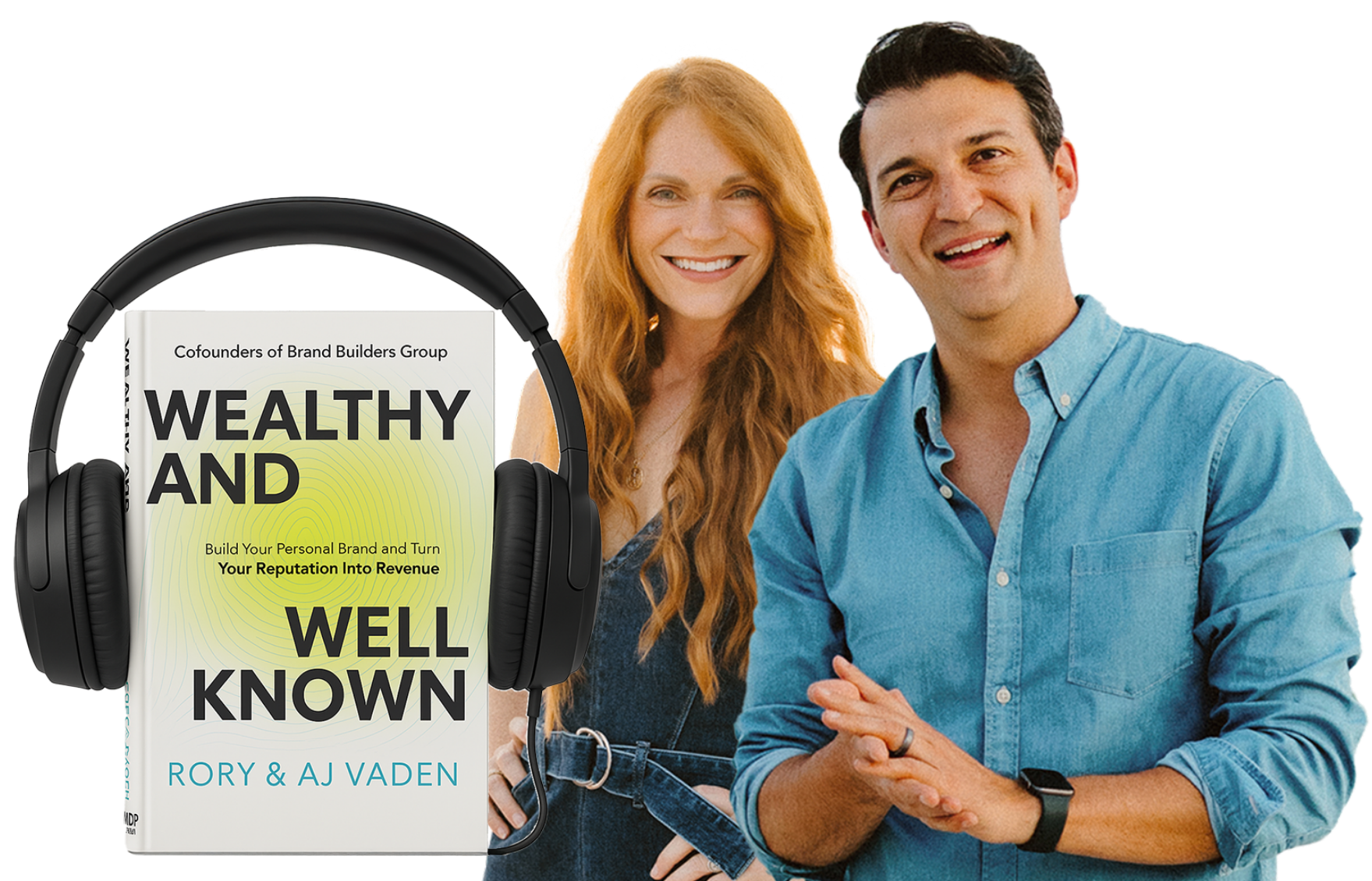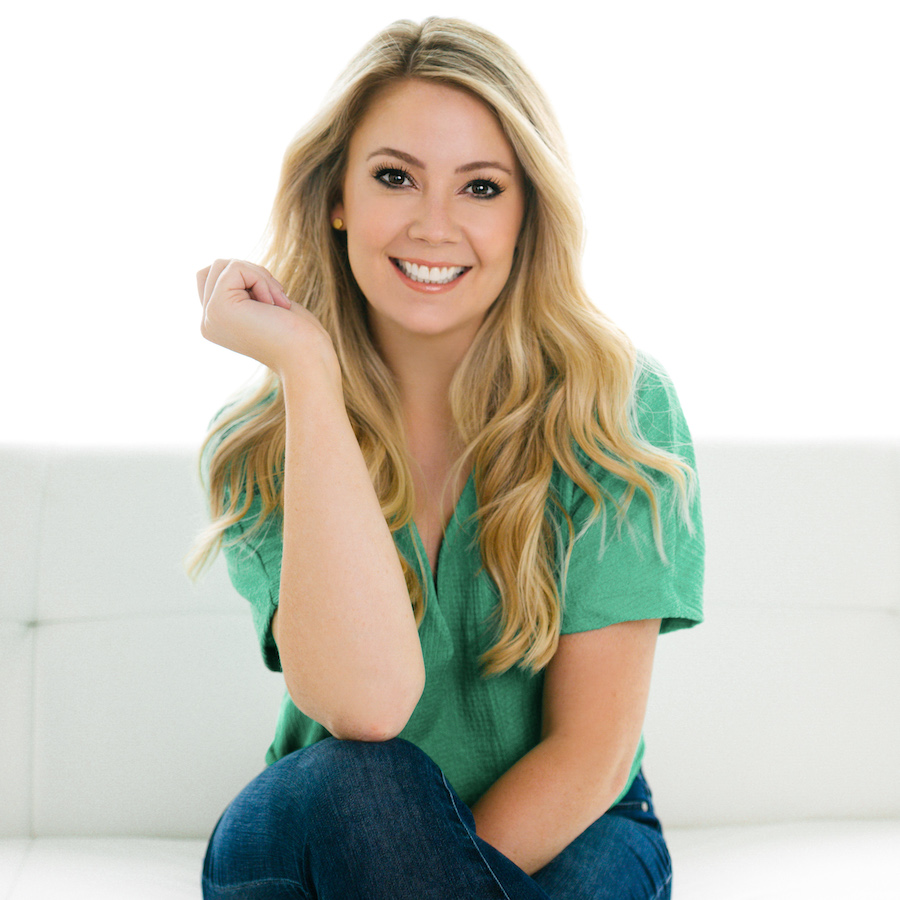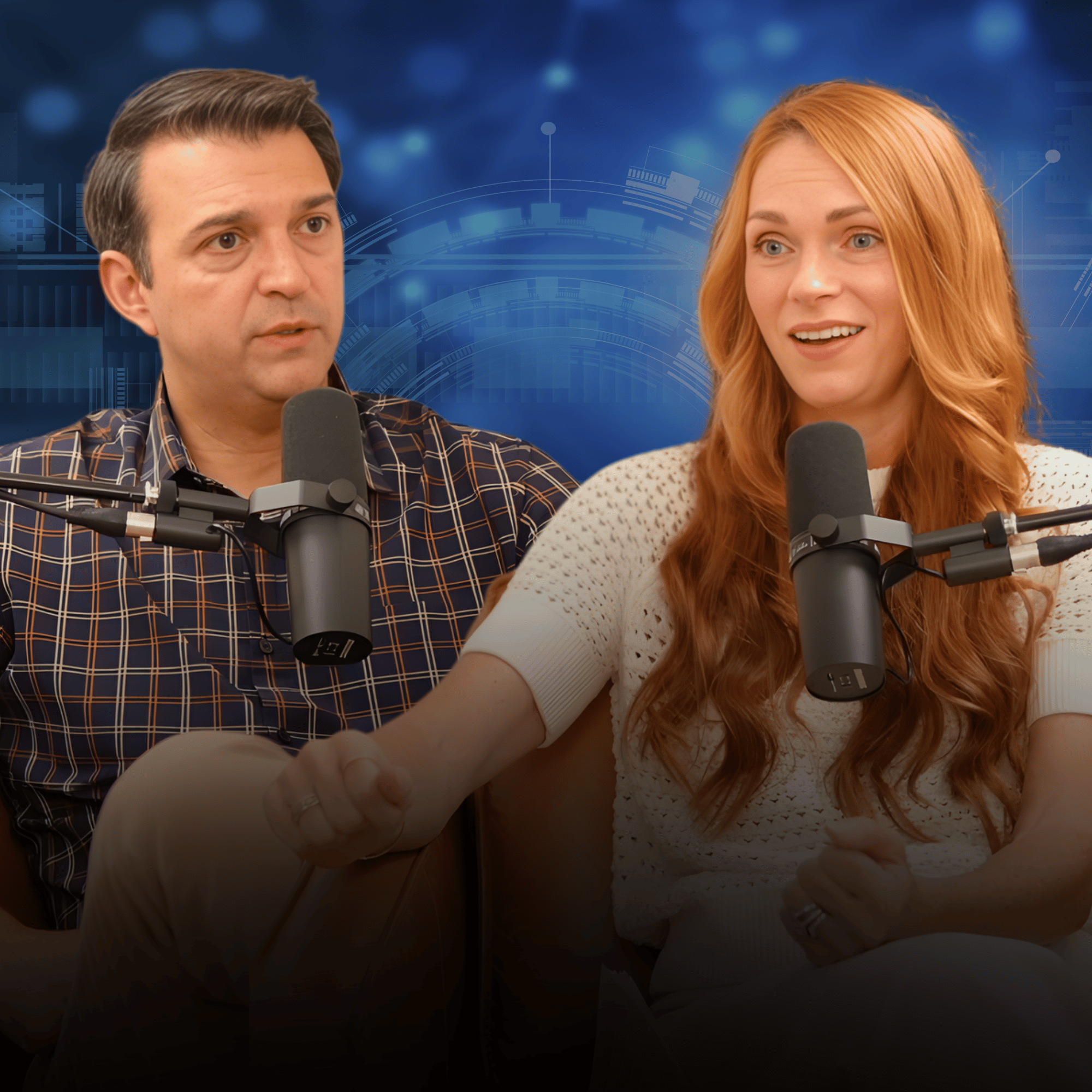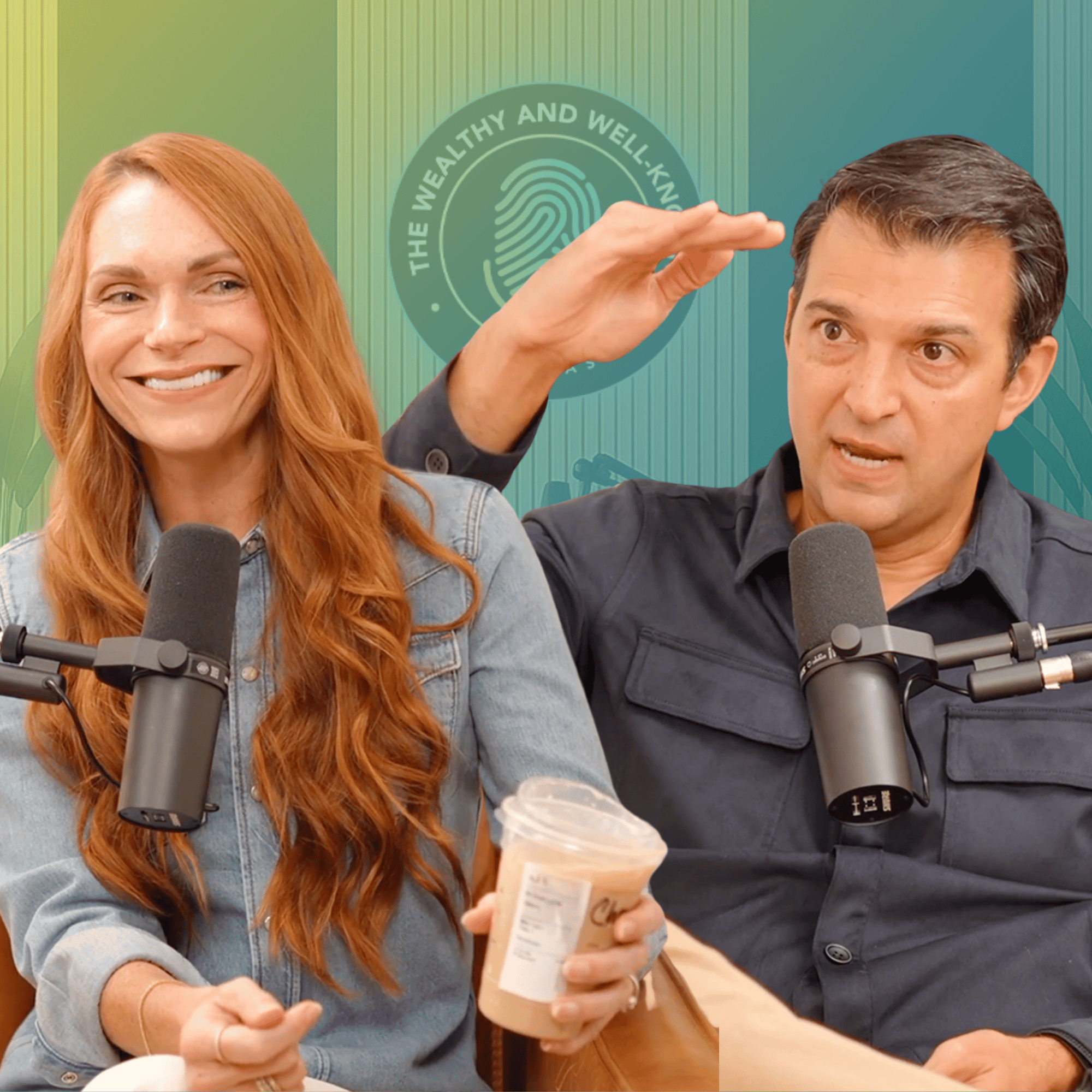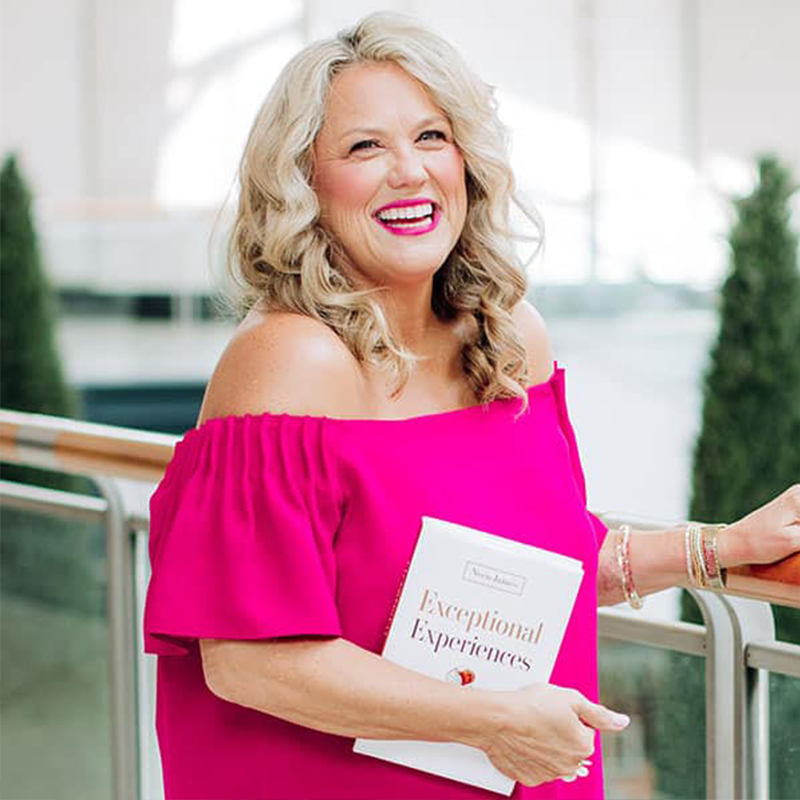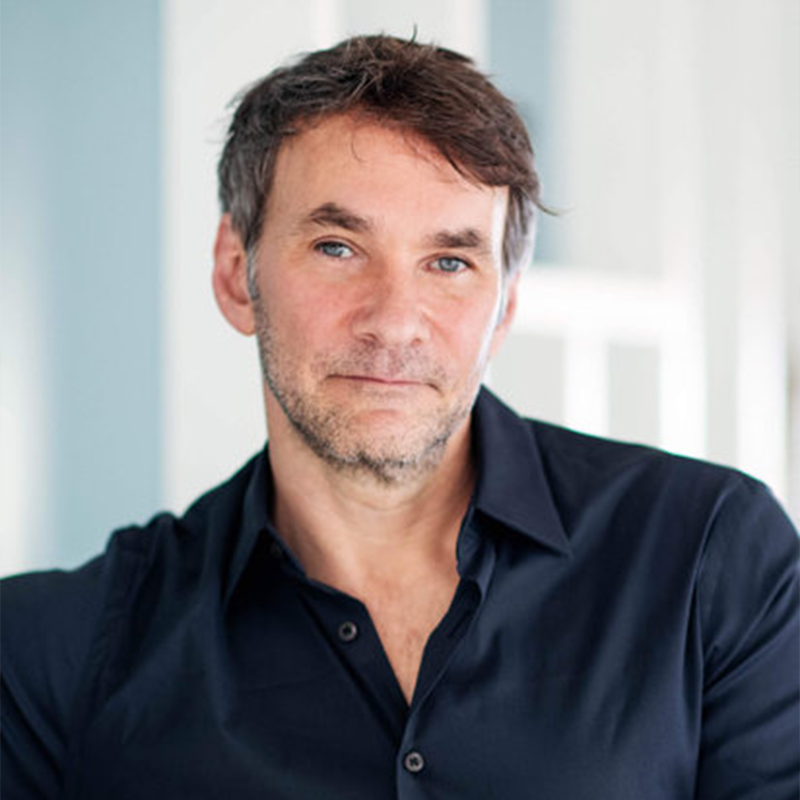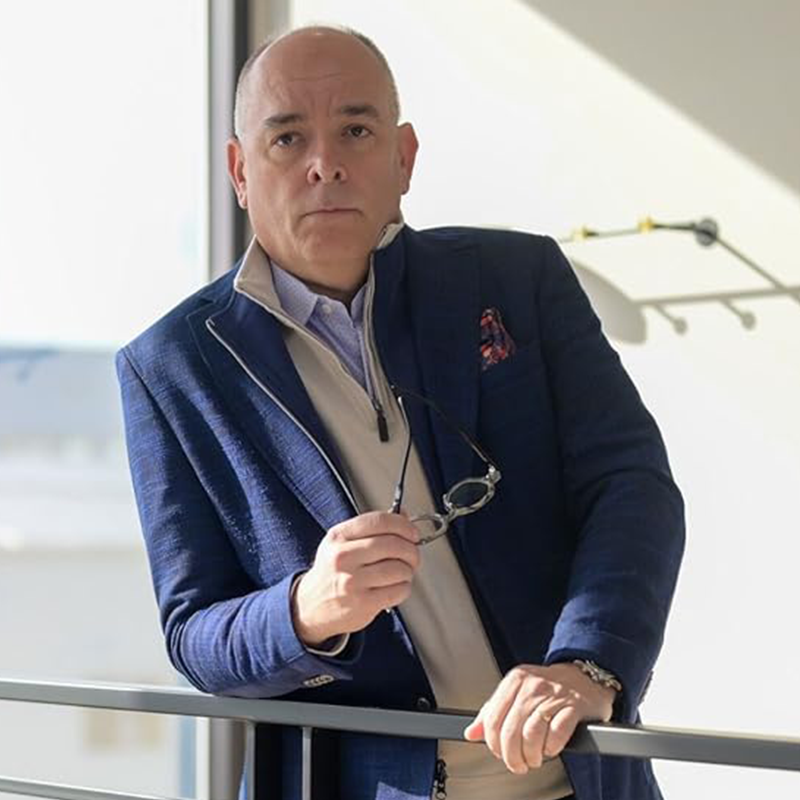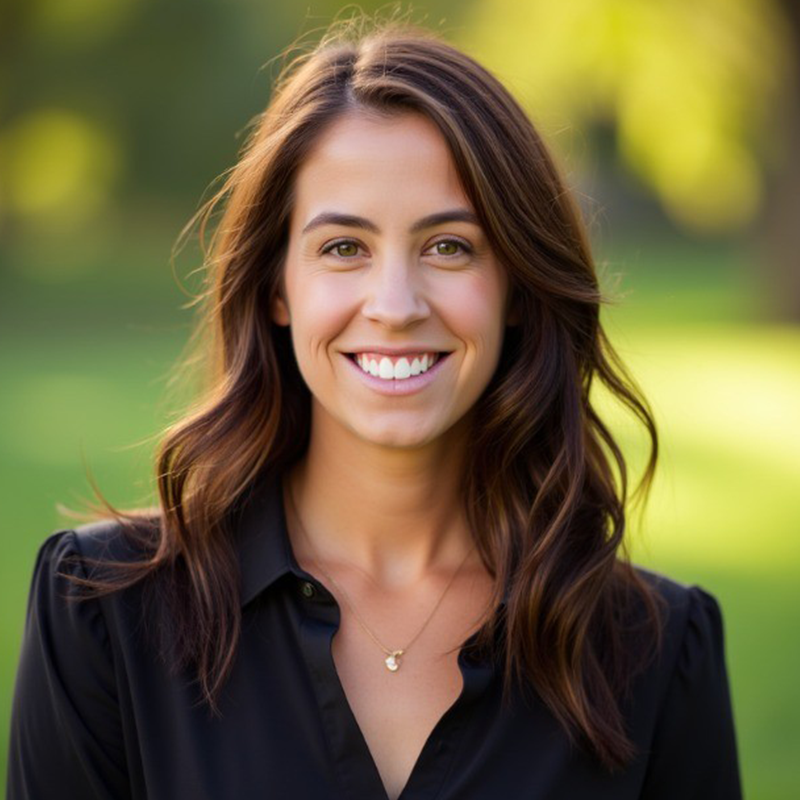RV: (00:01)
Holy moly friends. Ayou’re about to have your world rocked by. One of my newer friends who I absolutely adore and admire. Elizabeth Rider is her name and she is incredible. So she’s a nutritionist. She’s an author. She has a book, a great book that just came out called the health habit. She’s a, you know, a health coach and an online business mentor, but she is one of the like, Oh geez. Of blogging and building an audience. And if you go to your, if you go to her website, so she’s, she’s a seven figure. She’s turned it into a seven figure business, which we’re going to talk about. If you go to her website you’ll see, you know, we’ll put links to it, but elizabethrider.com. There’s over a hundred thousand people on her email list, which is very public. But what you wouldn’t know unless you were friends with her like me and we call her Liz and not Elizabeth cause we’re friends, is that this woman is getting 700,000 to a million page views a month of pure organic traffic from Google. From her blog. So to give you a frame of reference, like at my peak as a blogger, I was around a hundred thousand views in a month. So this is like 10 times beyond as an average of where I’ve ever been at at the best. So I, I was like, we gotta we gotta we gotta have her. So anyways, she’s the coolest. She’s here and Elizabeth, thanks for making time for us.
ER: (01:33)
Thanks Rory! Wow, that’s a lot. It’s a lot to live up to I feel like. But it’s all true. The page views the [inaudible] that’s what I want to talk to people about.
RV: (01:41)
Yeah. So, so I want to just hammer that directly, right? Like, because social media is like, it’s like the world of it’s like in golf, you know, they say like you drive for show, but you putt for dough and, and social media is like the drive. Like, Oh, you can drive the ball 350 yards. But it’s like the people who make the money know how to putt. And I just want, like, I just want your perspective on social media versus blogging because I don’t think people hear it. I don’t think that’s what you hear people talking about.
ER: (02:15)
Yeah, for sure. Like let me just say this. I mean I’ve got a lot of thoughts about that. I’m going to preemptive all the saying everything I’m about to say doesn’t mean that social media is bad or not good or useful cause I still use it too. So this is not to say that none of it’s useful, but I see an epidemic that needs to be corrected, especially with people coming into building brands right now where they want to spend all of their time. And I’m going to use Instagram is like the place, right? Because we’re in the zeitgeists. We’re Instagram is a place that people want to be. And again, it’s not bad. I want Instagram too. But when it comes to like this like longterm idea of people seeing your content and building a brand and getting, establishing yourself and using your time well, this is what I want to talk about.
ER: (02:59)
Instagram or Facebook or any of them, maybe 1% of your audience, you know, maybe if you’re really highly engaged, three to 5% of your audience sees all of your posts, right? And they see it within 24 hours and then it goes into your feed or onto your grid or whatever it is. And it’s, it does happen, but it’s very rare that someone scrolls back through maybe five posts, even think about a hundred posts, right? Like a deep, like, you know when somebody deep likes one of your photos and you’re like, Whoa, they were deep on my feedlike that. You know what I mean?
ER: (03:28)
And it’s like, well, you never want to happen when you’re like scrolling. Like maybe you find your app, your significant others acts or like you know, someone who you don’t want them to know that you’re looking at their stuff. You’re like, don’t like anything. Make sure that you don’t accidentally double tap something like my example all the time, but it’s rare, right? Right. What I see is people, you know, spending so much time crafting this content that maybe a hundred people see if even right, if you have a large brand, maybe 1,002 thousand people see it. If you’re just starting out, maybe a few people see it, but then it gets buried, right? And none of that is cataloged in the search engines. Now let’s talk, let’s talk about a blog where I have a post that I wrote in my sweat pants eight years ago that sends 80 to 100,000 people a month to my blog. Still from every month, every month.
ER: (04:26)
And in turn the, you know, a percentage of those people get on my email list. That’s the granola post on my healthy homemade granola post. I just wrote a post and I want to also make sure everybody knows it’s not just because I wrote it eight years ago, that one happens to be there. A post I wrote last year is a number one ranked Google search for easy to kill hard boiled eggs. So in that, I just wrote that last year. So I don’t want people to think, well, yeah, that was eight years ago, right? Like you can write a post now that, yeah, it’ll, it’ll become it. So what I want to, what I would, I really stress for the people who I coach and anybody who asks me about this, I’m like, look, your blog is the home of your business. It’s cataloged by Google and it lives there forever.
ER: (05:03)
And if you do it right, if you know how to do it, you will get traffic literally, perpetually, forever. That can continue to build and continue to grow and continue to put people on your email list to see your products and services you can continue to serve. Or that same amount of time could’ve been spent on an Instagram post that’s now buried 80 posts deep. No one’s ever gonna see again. So it’s kind of like, you know, w I think people, and I’m gonna, this might be a little bit of tough love, but you’ve really got to humble yourself to be like, I don’t need to be part of the popularity contest on Instagram. What I need to take my time and serve my blog so that I can continue to reach readers and PR potential clients and customers forever.
RV: (05:48)
I love that. You know, I’m thinking of a parallel here with money. You know, there’s a metaphor I heard a long time ago that you know, growing your wealth is growing in army and when you spend a dollar it’s like you kill off one of your soldiers. When you invest a dollar that is like a soldier multiplying, like it’s sort of, you know, kind of spawns when you, that’s almost how this is. It’s like when you spend all this time on a social media post, people see at once and then it’s gone forever. When you put that into a post that is, is cataloged on your blog, Google is driving traffic to it and the older, it’s almost like from a Google perspective, the older it is, the better in it. Like the, the, it can be really valuable.
ER: (06:30)
There’s something, and I want to make this clear to people. I’ll give everybody a tip here. It does, it establishes that Google, Google wants to continue to send people to things that they know people like which are being clicked on and people are spending time on the page. Google also likes old posts being updated because it knows that the site is fresh. So like the healthy homemade granola. Once a year I’ll go in there and maybe update the photo or like, you know, I’ve, I’ve updated a few of the sentences so you don’t have to do that, but Google does like that. I never changed the URL. Don’t ever change your URL. That’s really important but you can even add to it. You know, I’ve gone in there and been like, Hey, this is now one of the most popular granola recipes on the internet. You can, you can continue to update it. But yes, it likes the longevity when building the site. So the stores doing it now, the point of that is start doing it now. I haven’t got a year or two years or three years to start blogging
RV: (07:21)
And, and so I think it’d be fun to talk about Google here a little bit. Cause everyone hears about like hashtags and like follow and, and you know, hitting the search page or the for you page or whatever. But Google is like the ultimate search engine. And I think a lot of authors and content creators don’t really understand that much about you know, how does, how does Google work, so like, is there anything that you kind of do to, to, to sort of think in your mind okay. With every post, like is there any kind of checklist that you go through for that?
ER: (07:57)
That’s actually my new program called blog. Like it’s hot. I actually have an entire program, but I would love to share for free with all of your listeners. I’m like, it’s hot is my new course because that’s the problem is people are like, well how do I do that? Right? So I give everybody an exact checklist and you know, after, after a certain creative time, that becomes second nature. So I don’t even need to use a checklist, but I’ll, you know, give everybody a checklist. One thing you really want to do is name your posts. The title of your post needs to be what somebody would Google. So like one of the reasons that that you know like if we look at easy to feel hard boiled eggs people, I didn’t, I didn’t call the post the trick to peeling hard boiled eggs or
ER: (08:36)
Don’t make this mistake when you peel hard boiled eggs or something like, and Google might Google would find that. But the just easy to peel hard boiled eggs. It’s like boom, that’s the title of the post and that’s what somebody Google Google’s. Now Google did make an update to the algorithm at the end of 2009 to have more of like predictive called bird. We don’t need to get into like the analytics, the technical side of that. But what it just means is that there is predictive, the search, the search engine is smart enough to kind of predict what they think the person is trying to find. So there is some logic built into that. But you know, for the most part it’s really important to name your post what it actually is and what somebody would Google. Whereas like an email list, when you’re emailing, you know, for the subject line you might use like a headline, right? Or like a question or you’re trying to get people to open the email that’s different than like what you would title the post. Just make sure your title. Yeah. So your post title and the email subject line are different. But just make sure your post title is what somebody would Google. That’s super, super important.
RV: (09:37)
Yeah. It’s almost like, like an email subject line might be like curiosity or shock or whatever, but it’s like your post on your page needs to be like, almost like it could be very literal boring cause, but it’s what the person would type in and and so how do you know, like so do you, are you like in the back of Google ads all day, every day? Like, are you in Google analytics looking and being like, what should my posts are ranking and traffic or like what’s, how do you keep score?
ER: (10:09)
That’s really interesting. I don’t that much. So I teach things a little different because, so you can look at keywords and you can do that. I don’t use Google ads at this moment. I could in the future, I don’t use ads. There’s a, there’s a keyword tool in ad words that people can log into and search keywords. I always tell people like, look, and I think this is what makes me different. And like the blogging teacher’s sphere, if researching keywords worked and ever you just blogged off of researching keywords, everybody who ever did that would have millions of views and they don’t, right? So the way I teach blogging is like, one kind of goes back to what you guys teach about a personal brand. It’s got to like fit into your how you serve and what you teach. Right? So, and when you know your customer, when you are connected to your mission and your customer, I know what my customer’s Googling.
ER: (10:56)
How do easy to feel hard boiled eggs, right? Like how to make healthy, homemade granola. These are all things that I know that my customer would Google. And I think that blogging has to be enjoyable. This is all stuff I’m doing in my, like, this is stuff I eat and stuff I’m doing in my real life. I’m not blogging about things that I don’t use or eat. So, you know, the truth, the actual definition of blog is weblog and it was intended to be just a wet, a log on the web of your daily life. Right? That’s what a personal blog started out as. And now it’s, you know, we use them in many different ways, but for me it’s like I stay in my lane of, I know like my blog is about healthy recipes and practical tips for healthy living. That’s, that’s right.
ER: (11:36)
That’s right. I stay, I also have, you know, category for business for when I do that. You know, I always tell people have three to five categories of your, on your blog, not more, right? You don’t want to dilute yourself. You’re going to see five categories on my blog, something’s going to fall in there. And really for me, the way I decide what I’m going to post, I do have, you know, a map out a calendar, but if the week, if I want to change it that week, if I’m like, wow, I made this instead or you know, this recipe just came up. I change things on the fly too, but I actually keyword research can be, can be useful but it’s also when you have a personality brand and a personality based business, you’re blocking about what you’re doing right and about what you teach and what you’re good at.
RV: (12:18)
Sure. But, but so you’re not, you’re not like huge like into Google analytics or using, you know, crazy tools. Just every once in awhile you’ll get a report from like somebody who will send you a report or something.
ER: (12:29)
Yeah. I look at my Google analytics. I mean absolutely you need to have it installed. I look at it probably once a month. What I think is super valuable for me for with Google analytics is that I can see those really high traffic posts that are performing well. Google does want to see those updated or just that they’ve been touched at least once a year. Just cause it still says, Hey, I’m still here. Like some someone’s the gatekeeper of this. I might update an image, I might update something, but I also make sure like midway through the post I have an extra special banner or something that’s like, Hey, get on my email list. Like, Hey, if you’re loving this post, make sure, you know, cause you can include extra calls to action and those really high performing posts to make sure that that you’re maximizing the space. So, so it’s interesting, you know, it’s interesting to see and I go look at those posts and you know, I do the same thing on every post as far as like how I you know, write the title, pose the H two tags, the images, how I construct the post. But then I’m like, what are these, you know, I do have these like 10 or 15, like huge traffic posts. I’m like, okay, what’s happening on these? You know, what’s, what’s making,
RV: (13:34)
So you’re always watching those, you’re always like, let me pay attention. Is it like star players, right? It’s like, okay, this is like, you know,
ER: (13:41)
It’s also seasonal. You know, like in December, healthy homemade, hot chocolate almost surpasses healthy homemade granola, right? But in July, that’s not going to be the case. So you know, for a blog like mine, it’s a little seasonal. One thing that I would tell people to do, I know a lot of people listening to this are like, wow, I’ve just been spending so much time on Instagram. So I want to mention this real quick. Look at your top nine or your top posts from Instagram from the last year and fricking take a Saturday or Wednesday and Thursday night and turn that into nine blog posts. Like whatever your highest performing content was, turn those into blog posts, immediately. Get those onto a blog. That’s nine posts. People are always like, what should I post to my blog? I don’t have to post. I’m like, if you have good Facebook or Instagram post tournament blog posts.
RV: (14:23)
So I was going to ask you about that in terms of like repurposing your content. You know, like it sounds like you’re a classic, your process is more of like a classic blogger. Like you sit down and you write, you write an article, you’re not transcribing something or starting with something else. And then how much of that information do you post on social or does it, do you really treat them separate as like separate entities?
ER: (14:49)
You know what’s interesting, right? I don’t, it’s not that I treat them as separate entities. We do take we link to my posts and we rotate through them on the Facebook feed. On Instagram. It depends, I do a story or you know, a post if it fits into the grid. But I really, for me personally, I see social media as like an accoutrement to my, to my blog and it’s really work. People connect with me. So I do a lot of like face to camera stories and that kind of a thing where, and again, it’s more the reach. And one thing I’m proud of and I’ll say, I’ve never bought Instagram followers or any social media followers. I’ve never purchased followers. So all of my followers are, you know, legit real followers, which means also it hasn’t grown as fast as some people who have, you know, invested in different ways or maybe have purchased an audience. So, you know, I have 20,000 ish Instagram followers, which is amazing. It’s all, you know from just organically growing that. But when I know that I can have almost a million or more page views a month on my blog, that’s where my time and effort is going.
RV: (15:56)
So can we, do, I want to shift the conversation a little bit to the email list? Because you know, I mean like, obviously we’re, we’re big, we’re big fans of the blog, right? And we, we basically think of social media as just like traffic redirects. They’re just like tributaries that like point, point people back back to the blog. And there’s some other things that it does, social proof, et cetera, et cetera. But the, once they come to your site. All right, so you’ve got this title like you’ve gone through, you’ve done all the tagging and all the, all the steps of the, you know, what you’re going to do to make sure it index as well. What are the things that are actually building the email list and can you just talk about why that’s important? Like if, you know, there’s a million people coming back every month, like does it even really matter to build the email list? How do you do it? Where do you do it? How often? When like talk about that a little bit.
ER: (16:54)
It’s still absolutely important. You know, email is, this is the way I credit, it’s almost like to dating. Like if, if someone’s going to ask out on a date, social media is like meeting at a bar and maybe chatting with somebody and all your friends are there, right? Like you’re, you’re not really that invested in it. Like maybe he’s cute, she’s cute. You’re like having a little bit of a thing. Somebody coming to your website to me is like you’re meeting that person for coffee, right? Like it’s a little bit more intimate [inaudible] out of the noise. You’re like, okay, we’re gonna have some coffee. Being on someone’s email list is like inviting them into your living room. Right? Or maybe, and I will say like in a cheeky way, like almost your bedroom, cause a lot of people wake up in the morning and they get on their phones and they start scrolling.
ER: (17:35)
And guess what, you might be on there, they might be on your email list and you’re the first person that they see in the morning. Like that’s like a legitimately like real thing that happens. It’s like this deeper level of intimacy because there’s been an exchange you gave them, they gave you their email address. And generally what, you know, people call these different things like a big banana. Like everybody on the internet is monkeys and you need to like, you know, have a bunch of bananas that people can grab. I don’t love that analogy as much. You know, the free download on your website, right, like that you’re, you’re exchanging value, they’re giving you their email address and you were giving them something for free
RV: (18:08)
Lead magnet.
ER: (18:11)
Right now on my website we’ve got five, five healthy habits that you can implement today for immediate results or, you know, an eight page guide. And one thing, you know, which was actually something that I like, I had this dawned on me, I should have done this way sooner because my email list would probably be even bigger. That’s in the header of every single blog post on my website. My lead magnet is in the header of every single blog post on my website. So when somebody lands there, it’s, it’s at the top no matter what. It’s also underneath every single post. I keep my sidebar pretty clean of things just because on mobile and traffic’s going mostly mobile. I think 60 or 65% of my traffic is mobile. They don’t see the sidebar. Anyways. so don’t, you know the sidebar, it’s not a bad thing to use, but I, I have the sign up. There’s one above the post, one below the post, and then there’s a scroll pop up that once somebody gets, I think it’s 30 or 40% through the page, it pops up and it was like, Hey, do you want this free thing?
RV: (19:13)
[Inaudible] What are you using for the scroll pop-up? Do you know?
ER: (19:16)
Well, I, my WordPress, my side of WordPress it’s designed on show it, but the blog is WordPress and I think we’re using pop-up ally pro right now is the WordPress plugin for the pop up. That might change in the future, but I think that’s just the tool that we’re using and it’s worked well. And then I use active campaign for email. So whenever somebody subscribes anywhere on the website, they get funneled into active campaign.
RV: (19:38)
And is there a certain percentage, like if you go, is there a certain percentage that you aim for every month? If you go like, Hey, if you’re getting a ho, if you’re getting you know, call it a million, cause it’s easy numbers. If you’re getting a million page views or visitors, I guess if you’re getting a million did you, does are page visits, right? Those are page views, so, so that could be it could be the same person. Right. So and then also
ER: (20:02)
It’s usually a million page views. It depends on the month. Honestly, the series is probably 200,000 to three or 400,000 people could be more, could be less, but you know, just depends.
RV: (20:16)
It totally depends. But then it’s like, and then some fraction of those people, like a, a larger, I would, I would think at this point some large number of those are people who have been there before. But then there’s also going to be a pretty big chunk just because of the volume here that are new people. Is there a certain percentage or anything that you go like, I want to see my email list growing by this percentage every month? Or you watch that closely or not really?
ER: (20:41)
Yeah, I, it’s, I’m, I’m definitely into analytics. I watched that. But I also focus, I try to focus the majority of my on just serving the audience and blogging. Although I will say we’re aiming for a thousand or more signups from organic Google traffic a week. I’m onto the email list and I would like to continue to scale that. And you know, the next will be 1500 and then 2000. So, and that’s, you know, that’s about what we’re out. I will also say with my email list, we very actively dump dump. That’s a terrible word, right?
RV: (21:11)
Well fits your dating analogy. Yeah.
ER: (21:14)
We dumb people who are inactive and this is really, really important. So on the email list, because people want, here’s what happens, a lot of things happen. Someone signs up, they Ms. Key there email address. So it’s never going to, you know, it might balance or it might be going somewhere or somebody changes jobs. 30% of email addresses are abandoned every year. So just think,
RV: (21:35)
Wow, that’s crazy.
ER: (21:38)
So think about like a previous job or maybe somebody changes their last name or they, or they just are like, wow, I’m so over this email address. Or people have like a catchall email address for that. Their, their signups, you know, it’s not their primary email address. There’s, there’s a variety of reasons or they’re just not interested. So I can’t, I think ours is set, it’s, and I give them a good amount of time. It’s like three or four months. If they haven’t opened an email, it triggers an automated re-engagement campaign, trying to be like, Hey, here’s, here’s another free ebook. Like here’s another freebie first and then a few days later, here’s another one. So we give them a lot of opportunity to stay, but if nothing’s being opened, we dump them. They’re not on the active email list anymore because at that hurts your open rates and it skews all of your numbers. So we really actively dumb people.
RV: (22:27)
Interesting. Do you delete them completely from the system or do you just put them in a bucket of people you don’t send email to?
ER: (22:32)
I want to delete them because I just like energetically like to see the number as is, however keep them. And it depends on what system you’re using. It’s ridiculous. You also pay for them. Well, no, actually an active campaign and most of them, if they’re not on any lists, you’re not paying for them. So it doesn’t hurt to keep them. Gosh, if I was paying for them, I would probably delete them because I’m at such a, the more your email list grows, the more you pay and I’m not going to pay for people who aren’t opening emails. Right, right. So if you’re on a system that you are paying for it, I would suggest considering deleting them. However, in the system that I used, we were only charged with their analyst. So we just removed from all lists and then the data’s there. Historically in case like this is more of just a general best practice in customer service and technical stuff, you want to keep people there because if they resubscribe two years later and are asking for something, you can see, Oh wait, you subscribed two years ago? It just gives you a history, it’s probably not a big deal to delete them. Again, my, you know, active campaign consultant and specialist is like, no, we need to keep them. And so I’m like, fine, if that’s the best practice, we will.
RV: (23:36)
Who is also a client, a client of brand builders group a and we love her and we’re so grateful for her. She’s amazing. So how, so do you email
ER: (23:46)
Your list every time you post a blog? Yes. Yes you do. No, I don’t just copy and paste. So I tell people do not use RSS feeds. There’s, you should, no one’s going to open those. Right? People want emails that are written to them and that are personal. Just like you said, that’s such an old thing to do like an RSS feed where it was like, Oh, the blog posts triggers and it just goes to everybody. People know that, that they’re not gonna read that. So, and besides that, your email subject line needs to be different than the post title. Because if you tell people what the post title is, they’re probably not going to open the email cause they’ll just know, Oh, if I ever want to did it feel hard boiled eggs, I’ll come back and open that. You know what I mean? But I do send them a quick email with like maybe a little personal, a line or two, like about what I’ve been doing that week. And then I might copy the first few sentences and then there’s an image and then it’s read the posts because you’re always trying to get people back to the blog cause then they’ll go to more pages, they’re more likely to see your services and they’re engaging in your brand more. The goal of that email is to get them back onto the blog. Yeah.
RV: (24:52)
So then, yeah, so once they’re on there, you say you’re pushing, I mean, once your email list gets big enough, you’re pushing your own traffic to some extent. I mean at some whatever, 20% open Raiders, 3% click through rate or whatever your email rates are, you’re driving a lot of that traffic.
ER: (25:06)
That’s a good point. As your email list gets bigger, what happens is like I do the post and I will tell everyone I am consistent. I am definitely not perfect. And there’s a big difference between those things. So I’m to, that’s you what I want to happen every week, but this may or may not happen on this timeframe.
RV: (25:25)
We’re going to all be looking next week to make sure this happens. And then we’ll be sending you
ER: (25:30)
Exactly most of blog posts on Monday. Schedule the email to go out Tuesday morning. Sometimes I posted on Tuesday and the email goes out Wednesday morning. I like to send my, have my emails go in the morning. And I do really realistically, it would be great to do one post a week, but really blog posts, I’m probably averaging three a month right now, which is good. And again, that’s consistent. Google really likes consistency on blogs and it doesn’t have to be perfect. Again, don’t mistake perfection with consistency. So don’t get down on yourself if you’re like, Oh, it’s Tuesday and I didn’t do it, you know just make sure that you’re doing at least three to four posts a month. Heck, even if you just did two, you’d be doing better. Well, Google doesn’t want to see is that you have all these blog posts and then you don’t post for a year and then you tried it, you know, and you can rebuild that.
ER: (26:17)
So that’s okay if that happens. But just try to be at least getting something up, you know, three new posts. And if even if I don’t write a blog post, I’ll still email my list that week. And it might just be because I’ve been blogging for so long, let’s say I didn’t get a post up this week, the email would just be like you know, Hey, here’s, here’s five chocolate recipes to get ready to for Valentine’s day and I can just link to five recipe chocolate recipes from the blog. Right. So it can be a new linking to other things. Hold things. Yeah.
RV: (26:46)
How do you keep, how, how long have you been blogging?
ER: (26:51)
12 years.
RV: (26:52)
So how do you keep coming up with new art? Like articles after 12 years of doing three posts a month?
ER: (26:59)
Yeah.
RV: (27:00)
Like don’t you run out of stuff to say
ER: (27:02)
No. So here’s a few tips for people. I never run out of things to say. One, if you’re doing, if you’re blogging about something that you really genuinely are passionate about, and for me that’s healthy food, you will never run out of ideas. Like there’s just, you know, and that might be, you know, when I think about recipes, I would never run out of recipes. There’s always something new. But one, one thing that really helps is like if you go look out, if you click on natural beauty or something on my site in that category, I’ll do like the natural beauty series where some people would be like, here are the 10 best natural products. I’ll call that the natural beauty series. And I’ll do 10 blog posts. Like one’s castor oil, one’s menuca honey, like each one will get. So, so take something that normally would be a list and turn that into individual blog posts into a series. Like one of like, one thing that I teach people in my program is like a year of content. You can create a year of blog ideas in one hour if you just come up with like four or five like categories and the thing about like three things that you want to teach in each category and turn each of those things into a series or into multiple posts and you’ll just never run out of never run out of ideas.
RV: (28:12)
Interesting. Interesting. Interesting stuff. Okay. So the last little section I want to ask you about is just a lot of our clients struggle with this, which is, you know, you are a nutritionist and a health coach, but then you have a section of your blog that is about business. Yeah, it’s so, so to me it’s like, it’s one thing if you have like health food and then you know, maybe did like a series on healthy oils or something like that. But business seems kind of like a, it seems like a little bit of a distance. Maybe it’s not. But that’s what I want to ask you about is like you, you, you have kind of gone ahead with just like keeping it together on the blog. Like how have you reconciled in your own mind? Like I’m, you know, I’m, I’m known for healthy, like you broke through the wall with healthy recipes.
RV: (29:00)
Like she hands wallets, you use that term which all of our listeners know about. You broke through the wall with healthy recipes. You’re a, you are a classic example of one medium, a blog, one topic, healthy recipes, extremely consistent for years and years and years. One primary business model, which is information, a secondary business model of affiliates. Like you are such a great example even though you weren’t our client of somebody who actually did this stuff. Does the stuff that we teach and talk about and then, and then so, so talk about the business piece. Like how did, when did that come in? How did you, was it like, Oh, I’m on the other side of the wall, fine. Or Mmm. You know, like,
ER: (29:44)
Yeah. I mean, I didn’t even know what the wall was, but I think here’s, here’s what it is. The business piece of my business grew from me figuring out the business on the house side and people being like, how are you doing that? What are you doing? Will you teach us? Right.
RV: (29:58)
So they were asking you for it.
ER: (30:00)
Yes. People were asking, but I’m also just teaching what I’m doing and I think if you look at it like ultimately, yeah. W like if you needed to pick a thing, it’s healthy recipes that I broke through the wall, but that’s also just what I was doing on a daily basis. Right? I was blogging what was working for me. And when you look at these categories, they’re all things that are working for me in life. All right. I am big, like I said before, like on your blog, pick three to five categories, right? Business. I, I did kind of, I was like, should I just, I was, I debated having business as a category. I’ll tell you that because I see what you’re saying. Like it can be confusing. Like somebody lands here for granola, what’s this thing about business? But what they’re seeing is that I’m running a business, right? When somebody lands on my blog, I’m running a business. So I think, you know, that category in my mind is there for someone who’s like, wow, I want to run a business like this. How would I do that? And if someone’s not interested in that, they just want the healthy recipes and they can just get the healthy recipes.
RV: (30:55)
Oh, so that’s just one of your five categories. It’s just like this, this thing that’s kind of over here. And I think what’s interesting too is that your audience was asking for it. That is sorta telling, right? If you’re serving the audience and they’re asking for it. Yeah. So anyways, I just, I thought that was, I thought that was really interesting. And you do, I mean, you do a lot of business from your business portion of your site. I mean you’ve done, Oh yeah. I mean you’ve, you’re one of the top affiliates for Marie Forleo and several other business people like and that, and that’s, I think the part that’s so cool about it is like that’s who you are. Like you’re interested in business, you’re learning business, you’re constantly, you know, we, we actually met cause you were at Louis’s mass Lewis house mastermind and I was there and that’s how we met. And so it’s like clearly that’s just like a hobby and passion of yours and it’s kind of true to the roots of the web blog concept of like I’m blogging about my life. Yeah,
ER: (31:49)
Totally. It’s, yeah, that’s exactly it. Worry. It’s like I view my blog and like everything I do now is, you know, I figured out what works for me and then I put it on the blog and I’m not saying that, you know, everybody has to do this. I’m not, it’s not like this is the one way that will work for everyone. I don’t say that with food and nutrition. I don’t say that with business. I tell everybody you need to figure it out for yourself. What way works best for you. But I view everything I do now, especially, you know, via the medium of the blog of like I feel a responsibility right in the different areas of success that I’ve had with my own health, with the business that I’ve grown you know, with, with what I’ve learned to share that and to say, Hey, this is an option for people.
ER: (32:33)
You know, even working with brand builders group, I want people to know that I’ve gotten a ton of value from you and I’ve had so much value from our interactions because I want people to know that I got value from that. And I want people to work with you. You know, be schools the same way. Like you, somebody just emailed me yesterday, they’re like, Lizzie, if you have your own business program, why on earth would you be an affiliate for another business program? And I’m like, because it changed my life. It, it legitimately changed my life. And there are people on my email list who might be like a photographer or a a business struggle, just store, you know, I had a woman who came through who wanted to start her own toothpaste line. Like you know, all of these different things. I feel like I’m doing a disservice to the world, to the email list if I don’t share what taught me to do what I’m doing now, if that makes sense.
ER: (33:23)
You know, so and I don’t view it as competition or cannibalizing. I think any business program I teach works in synergy with anything else that I recommend. Right? We all need to learn from multiple teachers. So I don’t view it as like you should do one or the other. I’m like, look, go learn from a lot of people, see who you resonate with and, and learn from a lot of people. But you know, at this point it’s still why, you know, on my website under become a health coach, you’ll see the Institute for integrative nutrition because that’s how I became a health coach. So, you know, there’s this old model of wanting to keep our secrets for ourselves or you know, the secrets to success that people don’t care or, you know, cause we feel like, well, what if I share this and somebody becomes more successful than me in my view.
ER: (34:06)
I’ve done my job as a mentor and it’s just a citizen of the planet. If I can share something with somebody and they do better than me, that’s good. That’s what I want. I want people to build bigger blogs, bigger businesses. I want them to become a more famous health coach. You know, have a higher traffic recipe blog. Like that’s good. Right? That’s why we’re here. And it’s, it’s, it’s, so, I don’t even know what the word is. It feels, it’s, it’s awful to think, well, I’m going to do all of this. I’m not going to tell you what the hell. Like I don’t want to live that way.
RV: (34:35)
Wow. That’s such like classic scarcity versus abundance mindset. Absolutely love that about, you totally got goosies listening to that. I mean that just the, the mindset of just what has changed in my life and just wanting to help people. Liz, where should people go if they wanna connect with you? Obviously Elizabeth rider.com and the health habit, the book, and we’ll link all that. What else?
ER: (34:59)
Yeah, Elizabeth fighter.com get on my email list. I send people a lot of free books and the longer you’re there, the more free recipes and eBooks and just insider stuff that you get the books on Amazon. I’m on Instagram. I do lots of stories, but yeah. However, here’s what I tell people. However, they want to connect. We’ll connect. I don’t do Snapchat. I don’t do tech talk. You know, I, I have my few mediums and I would love for people to come over to the website.
RV: (35:24)
Awesome. well thank you so much. This was hugely valuable, a totally a powerful perspective that I don’t think people hear enough about and really appreciate you opening the door to like you know, just the, all the behind the scenes of your business. So thank you for supporting us and we’re cheering you on and we wish you the best.
ER: (35:43)
Thank you. Thank you. Bye everyone.

